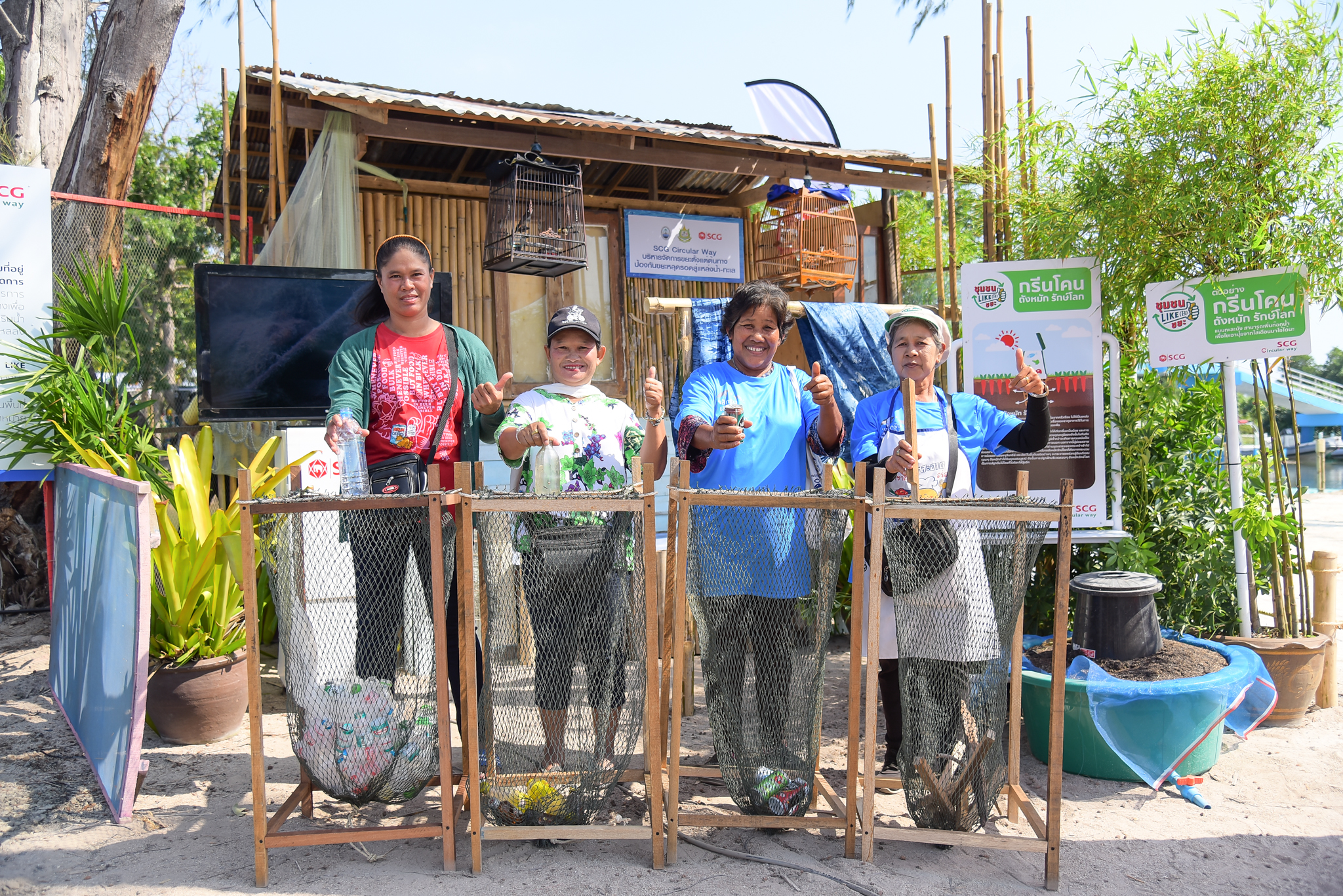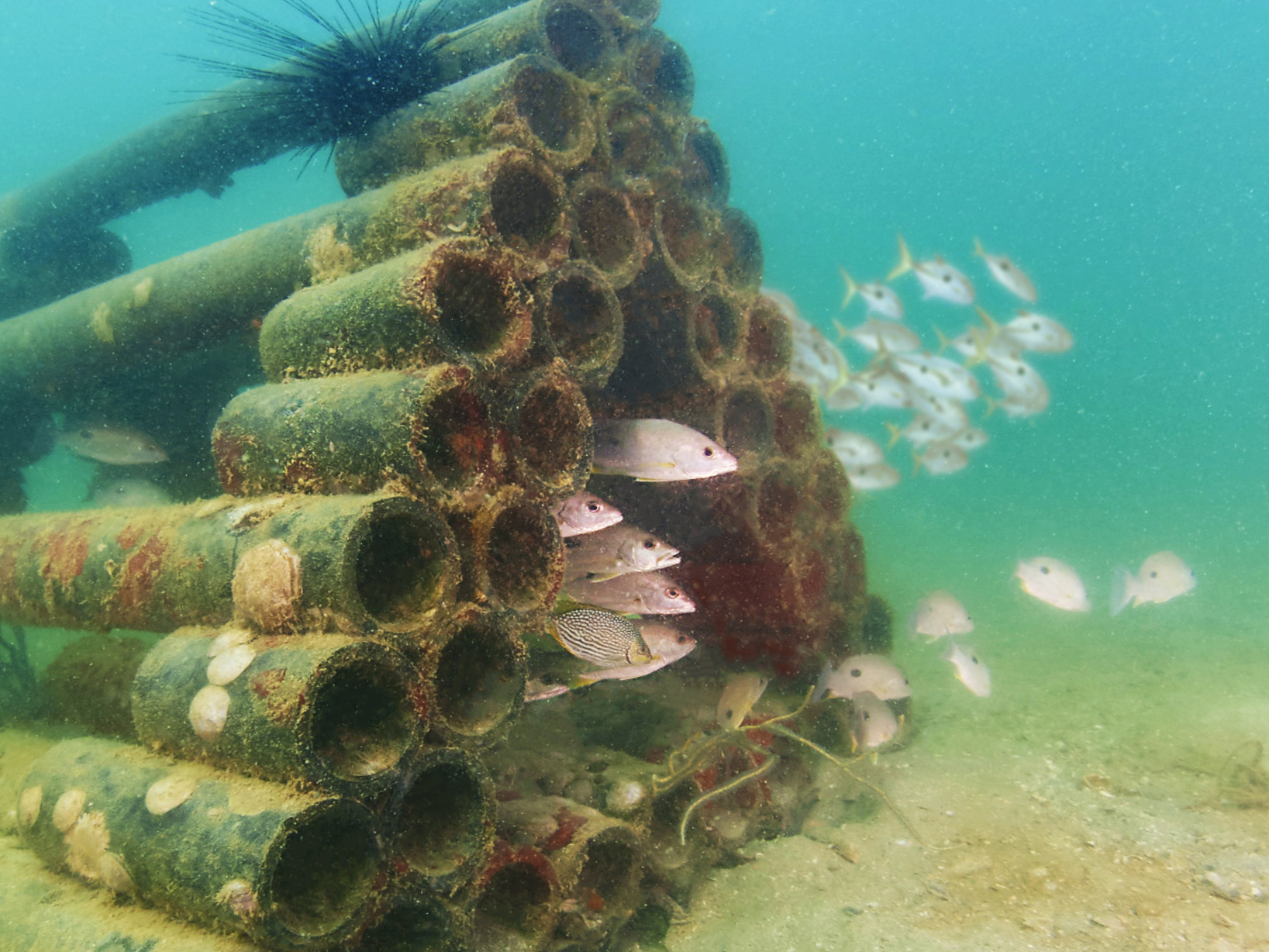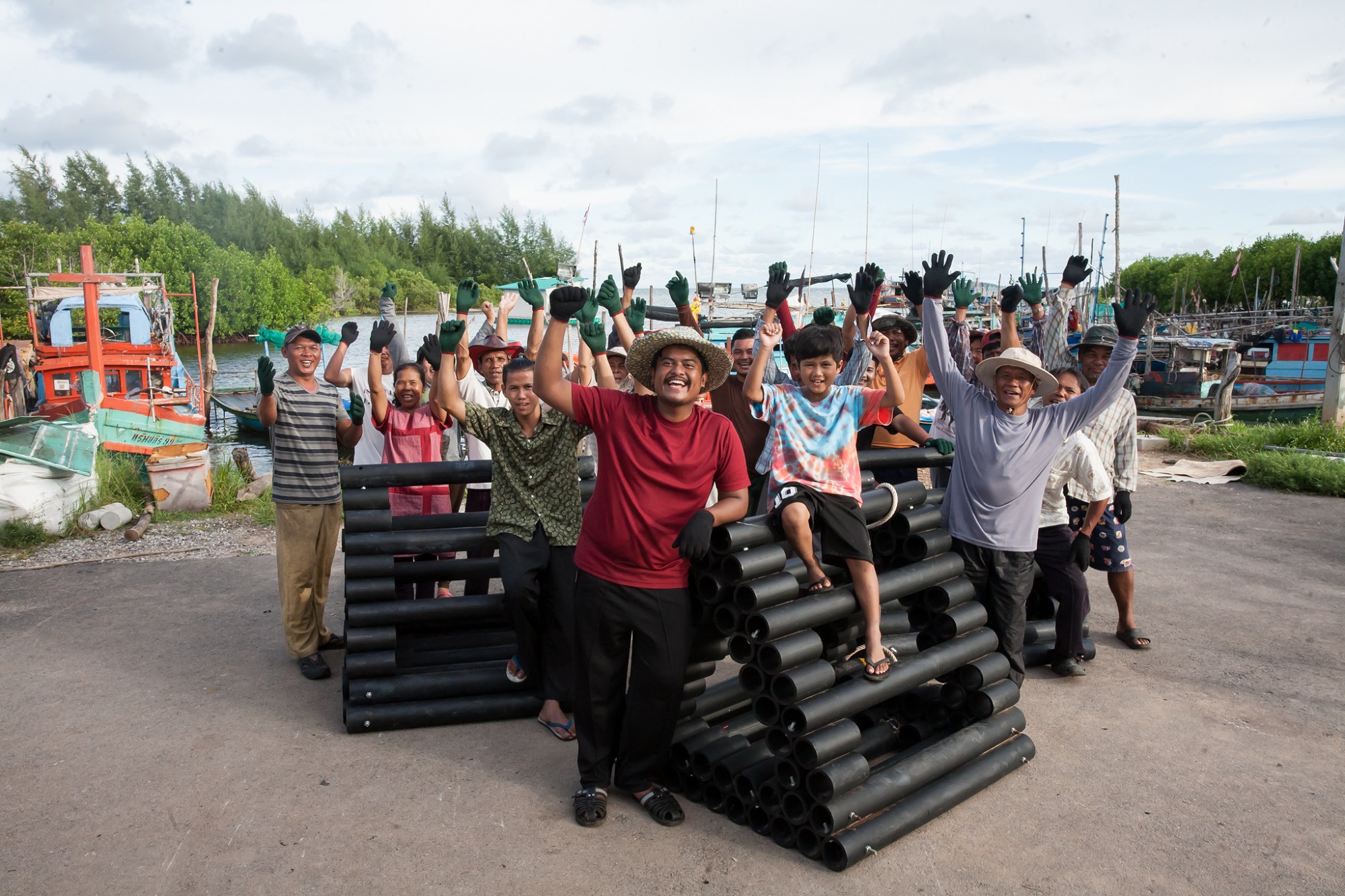Marine debris is an environmental issue that has come under the spotlight in recent years and prompted people to practice plastic waste management more actively. However, did you know that marine litter constitutes just a fraction of the problems facing the underwater ecosystem? That is because the sustainable protection of Thai seas will take not only prevention of waste from making its way to bodies of water but also ecosystem revitalization and the restoration of balance to nature as well as the cultivation of awareness and knowledge of proper at-source waste separation – an undertaking that needs to be carried out continuously and requires collaboration from all sectors.
For more than 20 years, SCG Chemicals Public Company Limited (SCGC) has ceaselessly pursued the mission of protecting Thai seas. Through collaboration with the government and public sectors, coupled with the innovation by the company, SCGC’s role as the protector of Thai seas has been carved out by the tangible outcome produced and the systematic integrated solutions to marine environmental issues.
Waste-free Communities – Initiating Waste Management At The Source
The best way to handle waste issues is to manage it at the source. As such, SCGC initiated the Bang Sue Model, where SCG staff at the Bang Sue headquarters were invited to properly handle waste with the concept “resource maximization, proper sorting, correct disposal” and the work environment was adjusted to facilitate proper waste separation. In addition, efforts were made to actively foster the habit of waste sorting. This initiative was later expanded towards community waste management in a program entitled the Waste-free Community Project in Rayong, in which the main strategy was to connect the three major institutions, namely homes, temples, and schools, to community waste banks and KoomKah application was developed to help waste banks and members of the project to manage data.

At-source waste management not only helps reduce the amount of trash but also increases resource efficiency as it allows for used plastics to be recycled and reused to the greatest advantage and lessens their chance to leaking into bodies of water. This approach thus truly addresses the root of the problem and serves as another way to cultivate the practice of waste separation in society.
Floating Litter Traps – Preventing Waste From Leaking Into The Sea
In addition to at-source waste sorting, SCGC implements an additional initiative to protect the sea through an innovation – the SCGC-DMCR Litter Trap, which it has co-developed with the Department of Marine and Coastal Resources (DMCR) to further enhance the efficiency of marine waste management.
Built on the oil boom invented by DMCR in 2018, the SCG-DMCR Litter Trap is 1.8 m. wide and 5 m. long and is constructed primarily out of leftover PE100 pipes from production trials. The invention is not only strong and durable but also maximizes resource utilization in accordance with circular economy principles.
Making use of the force of the current to keep the collected waste from flowing out of the trap with the ebbs and flows of the river, the litter trap was able to handle as much as 700 kg. of waste per day. It was later developed into the SCG-DMCR Litter Trap Generation 2, which was made from buoyant special-grade HDPE bones, thus improving buoyancy as well as UV-resistance. With a lifespan of 25 years, the new model was easy to assemble and install and more efficient in collecting marine debris.
Fish Home – Preserving Marine Ecosystems
Because SCGC’s mission to protect the sea systematically focuses not only on addressing the issue of marine debris but also on the preservation of marine ecosystems, the Fish Home Project was initiated. Carried out for 10 consecutive years, the project began in Pak Khlong Klaeng in Rayong and has since been expanded to coastal areas across the Eastern provinces of Rayong, Chonburi, Chanthaburi, and Trat. Thus far, SCGC has installed over 2,180 fish homes in Thailand’s seas across over 47 square kilometers of marine protected areas.

SCGC’s fish homes are constructed out of PE100 pipes, made of special-grade high-density polyethylene (HDPE) left over from the forming process in its manufacturing plants. The resin has been tested by SCGC, VTT Technical Research Center of Finland, and other institutions to be safe, free of hazardous chemicals, and eco-friendly as well as resistant to corrosion and high pressure, giving them a useful life of over 50 years. The fish home is designed to have the shape of a pyramid so as not to obstruct fishing or pose dangers to marine life.
International Coastal Cleanup Day – Collecting Waste, Fostering Love For The Ocean
Furthermore, SCGC has joined hands with its partners, namely the Industrial Estate Authority of Thailand and 23 businesses in Map Ta Phut and Ban Chang industrial estates in Rayong, to host the International Coastal Cleanup every year, with emphasis on empowering new generations and communicating to all sectors to promote ocean conservation initiatives, from simple activities such as beach cleanups to education of at-source waste management all the way to the revitalization of marine ecosystems in order to create sustainable livelihoods for local fisheries and a better environment for all.
It is thus evident that SCGC’s mission to protect Thai seas has been conceived to systematically cover the entire process from upstream to downstream to ensure that waste is properly managed the moment it is discarded by consumers and intercepted before it can make its way to the sea, while marine ecosystems at the end of the journey are revitalized through fish homes. All of this demonstrates SCGC’s clear determination to conserve Thai seas and protect their abundance sustainably.







